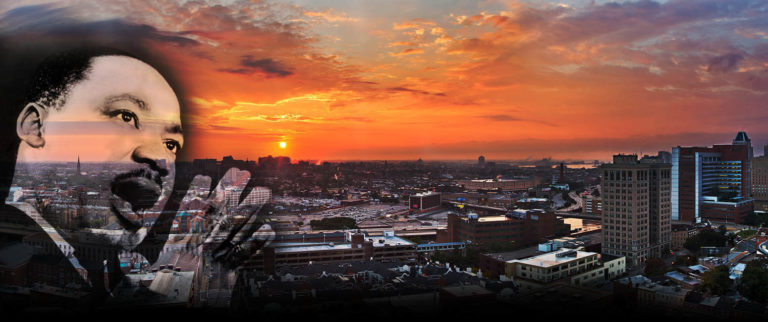April 4 marks the 50th anniversary of the assassination of the Rev. Dr. Martin Luther King Jr., whose principles of nonviolence in the pursuit of civil rights inspired Archbishop William E. Lori’s most recent pastoral letter.
While the murder of King on Holy Thursday in 1968 sparked rioting, across Baltimore it also moved men and women, then and now, to carry forth the ideal of equality.
Northeast Baltimore
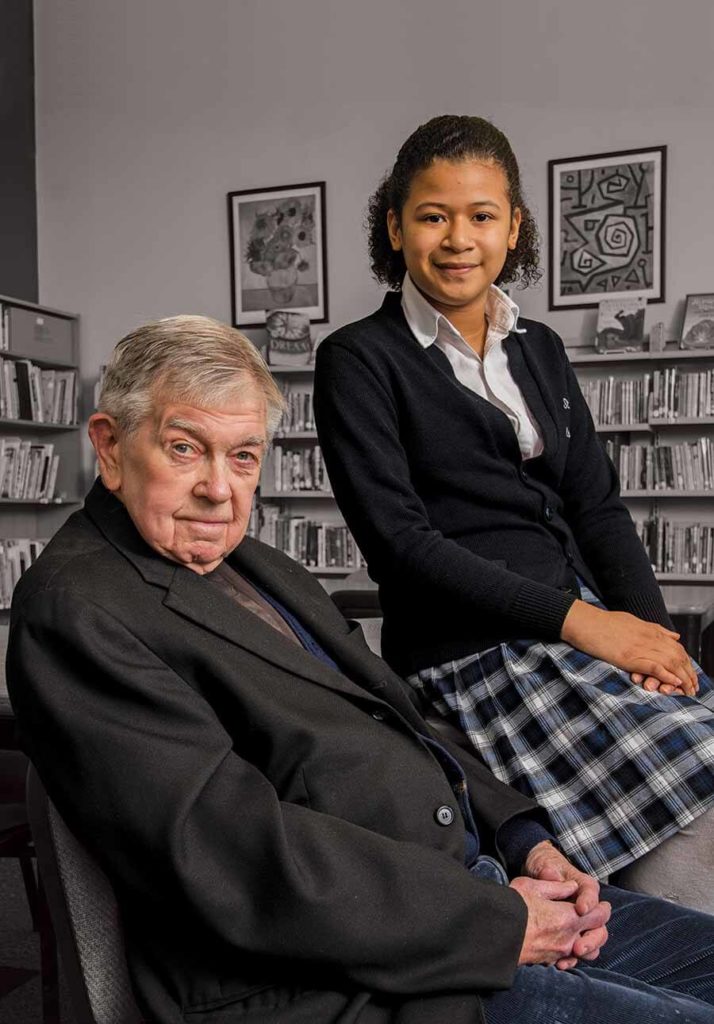
Monsignor William F. Burke, pastor of St. Francis of Assisi in Mayfield and since 1972 archdiocesan director of the Catholic Campaign for Human Development, was an associate pastor at St. Ann Parish in 1968, when Rev. King was assassinated.
“With the state of the country, and people who resented anything he was doing, you weren’t surprised,” Monsignor Burke said. “How it happened, was a surprise. … We had a prayer service (for King) in the church on Good Friday night, and it was packed. Flyers were handed out, telling people to be ‘secure.’ ”
The priests and School Sisters of Notre Dame who worked at St. Ann were given ribbons to place on the radio antennas of their cars, marking them as community assets. Among the businesses torched along the Greenmount Avenue corridor was a pawn shop, whose owner, according to Monsignor Burke, had groomed neighborhood girls into prostitution.
St. Ann was among the food distribution centers in an effort organized by now-Cardinal J. Francis Stafford, then head of Catholic Charities, and Father Richard T. Lawrence.
Monsignor Burke moved on to St. Mary, Star of the Sea, in South Baltimore, where he shook up worship by bringing in the choir from historic St. Francis Xavier, America’s first black parish, moving some in his congregation to “good” tears.
“That’s how you break it down, little by little,” Monsignor Burke said. “More was done in that hour and a half than if I had stood up and talked about racism for three days.”
He is pictured with Dilya Carter, a sixth-grader at St. Francis of Assisi School, who read her winning essay on Rosa Parks on Fox 45 during its Champions of Courage contest, held every Black History Month.
“Rosa Parks was a person of principle, and so is Dilya,” said her mother, Shirley. “She’ll stand up for what she believes is right, and won’t back down.”
Her mother added that Dilya “is most responsible” in helping her younger siblings. She is the third of eight children, with the oldest, Delondrae, being the valedictorian at Archbishop Curley High School last year.
Cherry Hill
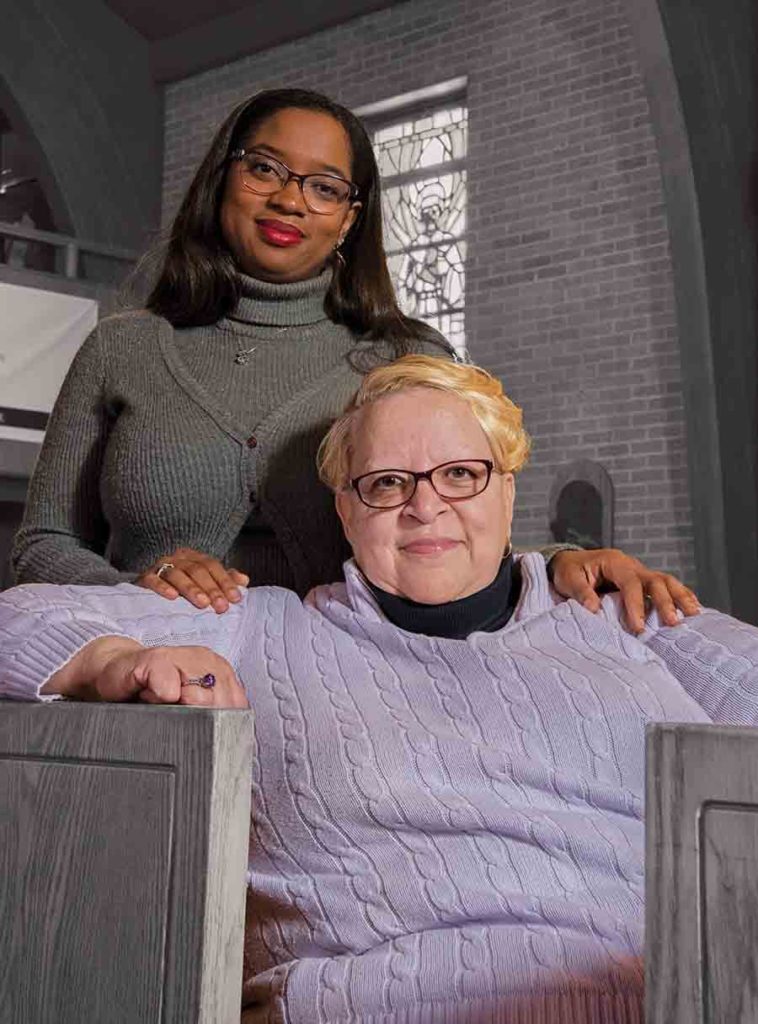
It was a serene Easter weekend in 1968 at St. Veronica, thanks to men such as Willie Battle, a veteran of the U.S. Army.
“There was not a single window broken, no destruction in Cherry Hill, which had 17,000 residents,” said one of his daughters, Cathy McClain. “The men in the community like my father, and the women too, wanted a better life. It was the greatest place to grow up; that’s why I work so hard now.”
In 1968, she was an eighth-grader at St. Joseph Passionist Monastery School, and already a Sunday School assistant at St. Veronica, beginning her service to a community formed out of Baltimore’s segregationist history.
She’s been employed both by Baltimore City and Catholic Charities of Baltimore, in its workforce development program; led Cherry Hill Safe Streets, an intervention program; and created a haven for children through the St. Veronica Summer Academy – all while serving as volunteer secretary for the parish.
McClain’s motivation includes the example of her parents, her time at Archbishop Keough High School, and drug dealers.
“I was raising a son a block from a house that was netting $10,000 a day in heroin sales,” she said of a scourge that infects nearly every corner of the city. “They were recruiting my son.”
That is a never-ending effort. While Cherry Hill went a year without a murder over portions of 2015 and ’16, the Drug Enforcement Administration announced March 14 the arrests of 19 in a New York-based gang alleged to be behind a spike in fentanyl overdoses in Cherry Hill and neighborhoods to the south.
McClain is pictured with Sherea Merez, the principal of Sunday School at St. Veronica, who led a church-sponsored dialogue with neighborhood youths in the aftermath of the 2015 death of Freddie Gray Jr. from injuries sustained while in police custody.
A eucharistic minister, Merez’s involvement at the parish began as a member of the youth council, and singing in the choir. She is committed to St. Veronica and Cherry Hill, at the behest of her mother, Hannah.
“Not only did she educate me regarding the legacy of Rev. King, she was a pioneer in her own right,” Merez said. “My mom helped integrate the federal courthouse in Baltimore, as a court reporter.”
West Baltimore
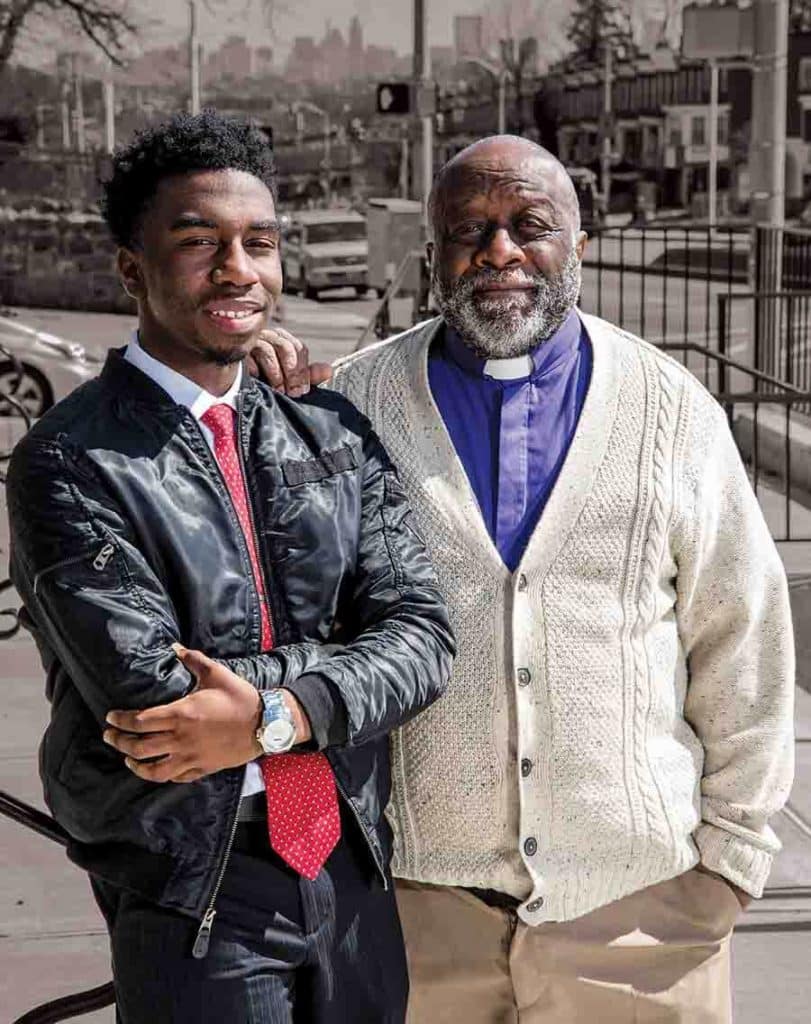
Deacon Wardell Barksdale was less than a year out of Baltimore City College when his father died unexpectedly in 1968 and the U.S. Navy granted him a hardship discharge to help his mother and seven siblings.
Baptized Catholic three years earlier at St. Martin Parish in West Baltimore, he became part of its efforts to stabilize the community after King’s assassination. That included Father Peter Hiltz, who was known for walking the neighborhood, sitting on the front “stoops” of rowhomes and evangelizing.
“During the riots, the two of us made runs to Towson in his Dodge, to fill it with food for the neighborhood,” Deacon Barksdale said. “Every time we got in the car, we prayed the rosary. … It was a such a loss for the community.”
Seven years later, Deacon Barksdale joined the Peace Corps and spent two years in Liberia. With a master’s degree in social work, he worked at a psychiatric center named for Walter P. Carter, a local civil rights leader, opened a drug treatment center in Park Heights, and in 2003, became a permanent deacon.
In retirement, he is a chaplain for Morgan State University and the Baltimore City police, in addition to serving St. Bernardine Parish, where he and his wife, Sharon, were married 39 years ago by the late Monsignor Edward Miller.
Deacon Barksdale speaks up about vocations among African-American men, and evangelization.
“I see it as critical for the longevity of parishes, the recruitment for the priesthood, diaconate, religious life,” he said. “The only way we’re going to change the city is to get out from behind the walls of the churches and into the streets.”
Deacon Barksdale has led a men’s retreat from the parish to Blue Ridge Summit for the last 25 years. He recruits adults to mentor youths, some of whom receive scholarships to attend national gatherings of black Catholics.
He is pictured with David Anoma, a junior at Owings Mills High School, who is the president of the youth council at St. Bernardine, where he sings in the choir and serves as an usher. Last summer, Anoma was among three youths from the parish to attend the National Black Catholic Men’s Conference in Miami.
“Some of the workshops were run by men not much older than us,” Anoma said. “We discussed stereotypes, like ‘all black kids go the mall, and are disruptive,’ and how to address them. Be respectful, open doors for people and smile. I see that I’m a role model for my little brother, Samuel.”
Anoma is an honor roll student at Owings Mills High, where he qualified for the state indoor track and field championships, plays football and lacrosse, and volunteers in several areas.
Sandtown-Winchester
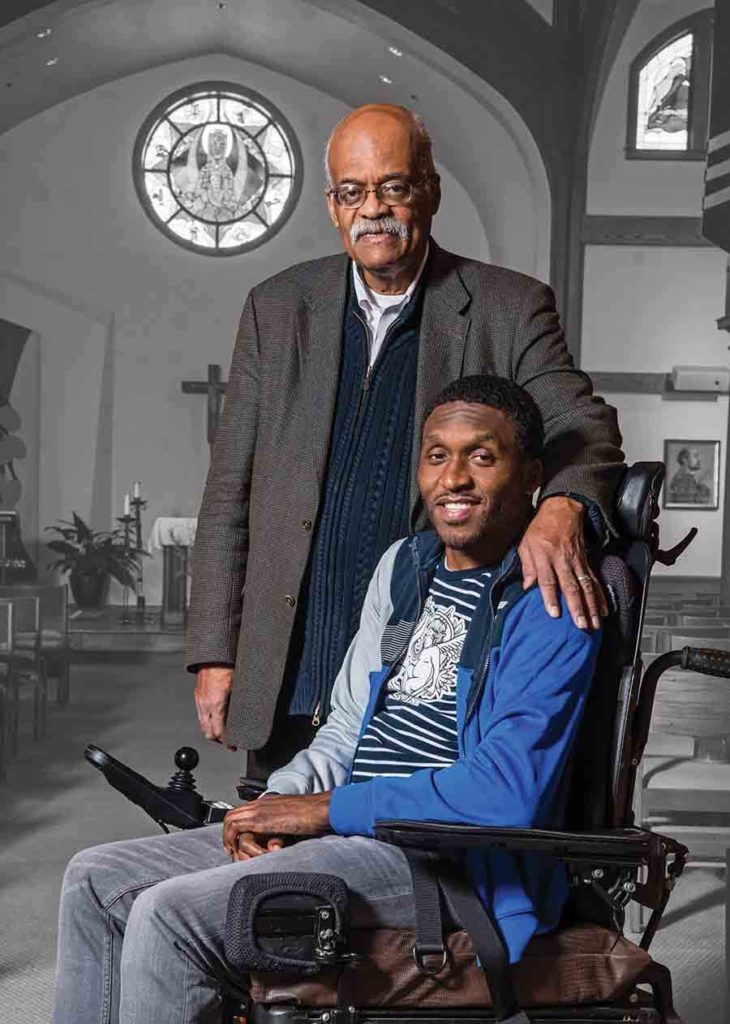
Ralph Moore traveled a considerable distance, literally and figuratively, to get to Loyola Blakefield, where he was in the class of 1970, as illustrated by the first of the three busses he took to get from his home on West Mosher Street to Towson.
“When I got on the bus on Fremont Avenue and asked the driver for change, he would ignore me,” Moore said. “As the bus went through Bolton Hill and white people asked for change, he was very pleasant.”
After Rev. King’s assassination, Moore remembers getting off his last bus home, “and running past the National Guardsmen and tanks” to beat the 6 p.m. curfew imposed by the city.
“I loved him (King) as a kid, but the older folks thought he upset the apple cart,” Moore said. “After the Cicero March in 1965, my father said, ‘they ought to throw (him) in jail.’ There was no compassion for King until he was assassinated. My father, as a black man living in a city with lots of prejudice and discrimination, came to speak well of him.”
Moore had attended the parish school at St. Pius V, where the Oblate Sisters of Providence “always talked about being socially responsible and giving back to the community”; Father Paul Smith was a rarity, a black priest from Baltimore who had been ordained for the Diocese of Alexandria, La.; and one of the Josephites on staff, Father John Barnett, would celebrate Mass wearing a “Boycott Gwynn Oak” button, a public denunciation of a segregated amusement park.
With a degree in Social and Behavioral Sciences from The Johns Hopkins University, Moore’s professional history includes St. Ambrose Housing Aid Center and the community center at St. Frances Academy.
His mentors included the aforementioned Carter, and some of the Jesuits at Loyola Blakefield, who walked a picket line alongside him in West Baltimore, protesting housing discrimination.
Last December, Loyola Blakefield closed for a day to investigate racist graffiti.
“What happened is part of the current climate,” Moore said. “People feel permission to be negative, racist, discriminatory.”
Moore is pictured with Van Brooks, class of 2006 at Loyola Blakefield and before that a student at Father Charles A. Hall School, who is the founder and executive director of the Safe Alternative Foundation for Education (SAFE).
Brooks, who suffered a football injury at age 16 that initially left him paralyzed from the neck down, earned a degree from Towson University and an appointment by Gov. Larry Hogan to be the director of the Governor’s Office on Service and Volunteerism.
SAFE’s success stories include the Williams twins, Trania and Tranay, who will enter the Institute of Notre Dame in the fall.
“Education is the great equalizer,” Brooks said. “All kids, no matter their background or ZIP code or race, have to have that opportunity, that access to receive an education.”
Email Paul McMullen at pmcmullen@CatholicReview.org

